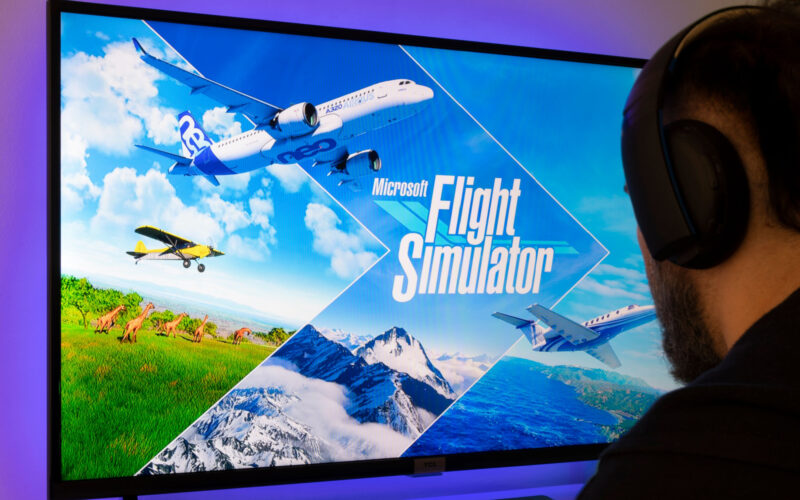This article was written and originally published on August 22, 2020.
Microsoft’s new iteration of Flight Simulator (MSFS), released on August 18, 2020, was one of the most anticipated games of the year. And while the game divided the audience, with ones praising its graphics and others ridiculing glitches and poor performance, the most important question for us is – how good of a simulator is it?
The biggest innovation, distinguishing the Flight Simulator’s 2020 version from decade-old Flight Simulator X, was the game’s ability to build a photorealistic world using high-resolution photogrammetry data provided by Bing Maps. Game’s engine, built by French Asobo Studio, features an AI system that can interpret map’s data and reconstruct the terrain and buildings of the entire world, in real time, in front of your eyes.
While undeniably ground-breaking achievement, it comes with a whole set of downsides. One of them is that, well, AI is an AI, and while it can achieve some impressive calculating, its perception, and – more importantly – ability to interpret things still lags behind humans. That’s how some cities ended up with skyscrapers where there were none, and indescribable monstrosities instead of trees and cars on the street.
While glitches can be infuriating and amusing at the same time, a whole other set of problems was created by the game’s performance issues. For ones it crashed, for others it lagged, for third ones the download took countless hours. And it was supposed to take long, as the MSFS weighs a hefty 91 gigabyte, all downloaded while in-game.
One of the most popular game distribution services, Steam, allows a refund if the game has been played for less than two hours, but for many those hours passed before they were able to even start playing.
So, disgruntled games went on to give purposefully bad reviews, bringing down the game’s near-perfect rating, compiled by awe-struck critics and other people who were able to play the game before the release. But this has nothing to do with the game’s quality, and does not even begin to answer the question, how well does the new MSFS simulate real flight.
Pilot’s perspective in Microsoft Flight Simulator
Not content with this development, AeroTime got in contact with one of the game’s beta testers, who is also a real-life pilot, and has clocked considerable hours in the air, MSFS’ version of it, as well as its earlier iterations. We will call him Louis. Louis talks with a slight French accent, likes his Cessna, and is kind enough to answer our questions.
“It depends on the aircraft, but overall, on the flight dynamics aspect of things, I was massively disappointed compared to what I was hyped for with the feature discovery videos released by Asobo Studios during development.” Louis said when asked how the new game compares to real flying.
“For example, you can’t perform some basic aerodynamic maneuvers with the aerobatics aircraft. You will struggle to maintain an inverted flight despite having a symmetrical wing profile, struggle or be unable to climb inverted and perform an inverted loop, and fail to perform sharp, precise rolls. The response of the plane can be sluggish.”
According to Louis, Microsoft Flight Simulator’s airliners (that include Airbus A320neo, Boeing 747-8, and 787 Dreamliner) will take off at lower speeds than they should and will have overly effective speed brakes. All game aircraft are unwilling to stall and spin like their real-life counterparts do, no matter how hard you try.
“The mechanics are fairly similar [to Flight Simulator X], perhaps too similar since it would seem that under the hood, the new sim has a nearly identical file structure as FSX and probably some drawbacks that come with it,” Louis, an avid player of Microsoft’s previous Flight Simulator, noticed. But, according to the pilot, it can be a good thing. Third-party developers will be able to port into the new game their content, created for the previous version.
When asked about his view on the main selling point of the game – its visuals and globe-spanning scale – Louis said it was exactly what could be expected with all the technological innovation of recent years, and despite bringing somewhat of a technological revolution, the game was kind of overhyped before the release.
“Otherwise I’m still happy, I managed to have fun with it, and I’m sure it will improve. But it was clearly not ready to go out; the release was rushed,” Louis concluded.


